 Soul Thief is a band that hails from the UK, playing a blend of what they describe as Pink Floyd meets Red Hot Chili Peppers. I definitely hear the Floyd, not so much the Chili’s. The band does get funky though, as the title of the album would suggest, but their sound reminds me a bit more of say, the more laidback cuts on Hendrix’s Electric Ladyland album. Funk City Revolutions, released last year, is their debut album, and the Cosmic Woman EP just came out a few weeks ago. Let’s dig into their full length debut release first.
Soul Thief is a band that hails from the UK, playing a blend of what they describe as Pink Floyd meets Red Hot Chili Peppers. I definitely hear the Floyd, not so much the Chili’s. The band does get funky though, as the title of the album would suggest, but their sound reminds me a bit more of say, the more laidback cuts on Hendrix’s Electric Ladyland album. Funk City Revolutions, released last year, is their debut album, and the Cosmic Woman EP just came out a few weeks ago. Let’s dig into their full length debut release first.
City Ride gets things going with a stabbing guitar riff courtesy of Marcus Gage, and a deliciously funky groove from the rhythm section of Robert Matthews on bass and Stuart Barton on drums. This is probably the most upbeat track on the album, even though it pretty much sticks to a mid-tempo pace. Things take on a much more chilled out psychedelic blues vibe with Jailbreak 68 and the cool space noir of Her Eyes See the Future. Sudden time changing rhythms also add a surprising element to the proceedings. By the time I got to the slow and easy echo funk of You’re Fire!, though, I was actually wondering when this album was actually going to catch fire. Other than that first track it was all pretty slow and moody. But after repeated listening to the whole disc, I began to realize that this was not about upbeat rocking and scorching riffing. Soul Thief are all about fires after midnight, burning low in swaying lamps, with the shadows gathering around, and outside the window, billions of stars shining down on a surrealistic landscape. Funk City Revolutions is all about the slow burn, the slippery, mysterious and mellow, smoky groove of the night, with an undercurrent of psychedelia tugging it along. They do toss a log on the fire though with the 10-minute long Stranger With a Gun, which picks up the pace a bit, and features some terrific heavy blues guitar in its first few minutes, but then it slides into a psyched out astral excursion with lyrics about tripping the seven seas and sailing around the sun. The sound of waves crashing at the end segues into one of my favourite tracks on the album, the luminous and misty Spheres of Gold. The album then closes with the nearly 10-minute Tiger’s Claw. All of these tracks have a certain ebb and flow to them, as they surge in power, then relax into a mellow groove, surge again, relax again, taking the listener along for a ride on the waves of some otherworldly ocean. But it also somehow manages to remain grounded too. There’s plenty of freaky effects and trippy lyrics to please lovers of psychedelia, but the music always stays rooted in the blues, which always brings it back to Earth and solid ground.
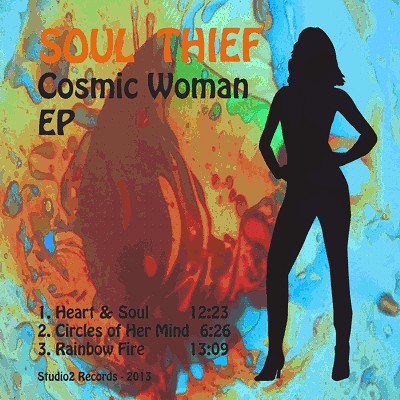 On the Cosmic Woman EP, the band picks up where Funk City Revolutions left off. Admittedly, it’s not that much of a progression from what we heard on FCR, but it does open with certainly one of the best songs the band has recorded, the 12-minute Heart and Soul. Dreamy acoustic guitars, some smouldering electric guitar, a sensuous bass and leisurely drumming pair with weird and eerie voice effects and bassist Matthew’s longing vocals. Things do pick up pace a bit with Circles of Her Mind, with some clever rhythms and Gage’s always, well, engaging guitar work. And while the band does create some memorable riffs, especially on this song, but on all their songs in general, they’re not built around the riffs, being more fluid in nature, as if the riffs emerge from that flow I mentioned before, rising to the surface, sinking into the depths. The final song on the EP is the 13-minute Rainbow Fire. Continuing with that ebb and flow tradition, the song builds slowly, till about 5-minutes in where Matthews starts singing, his vocals drenched in delay to nice affect. From there, it moves back and forth between instrumental jamming and vocal parts, till it finally drifts off into the night.
On the Cosmic Woman EP, the band picks up where Funk City Revolutions left off. Admittedly, it’s not that much of a progression from what we heard on FCR, but it does open with certainly one of the best songs the band has recorded, the 12-minute Heart and Soul. Dreamy acoustic guitars, some smouldering electric guitar, a sensuous bass and leisurely drumming pair with weird and eerie voice effects and bassist Matthew’s longing vocals. Things do pick up pace a bit with Circles of Her Mind, with some clever rhythms and Gage’s always, well, engaging guitar work. And while the band does create some memorable riffs, especially on this song, but on all their songs in general, they’re not built around the riffs, being more fluid in nature, as if the riffs emerge from that flow I mentioned before, rising to the surface, sinking into the depths. The final song on the EP is the 13-minute Rainbow Fire. Continuing with that ebb and flow tradition, the song builds slowly, till about 5-minutes in where Matthews starts singing, his vocals drenched in delay to nice affect. From there, it moves back and forth between instrumental jamming and vocal parts, till it finally drifts off into the night.
I really like their sound. It’s cool and original. But I did kind of wish that some of the songs varied in tempo a bit more. Other than City Ride, pretty much all the songs on Funk City Revolutions and the Cosmic Woman EP move along at the same languid pace. But they do use odd time signatures and intriguing rhythms, and Gage’s guitar work is just superb, going from smooth and bluesy to smoking hot, distortion heavy riffing. And I don’t tend to comment on the vocals a lot, but Matthews’ smouldering vocal delivery is definitely an integral part of the Soul Thief sound, bringing a distant, haunting quality to it. This band definitely has a future, and Funk City Revolutions and the Cosmic Woman EP are both part of a great start. Hope to hear another full-length soon!
For more information you can visit the Soul Thief web site at: http://www.soulthief.co.uk
Reviewed by Jeff Fitzgerald

 Electric Bird Noise is headed up by South Carolina musician Brian Lea McKenzie, who I first reviewed way back in 1999 when Aural Innovations was still a printed mag. Well Brian is still at it, and as I re-read my earlier reviews it seems Electric Bird Noise was originally a band, though it’s now a McKenzie solo project, with vocals on two tracks by Silber Records label honcho Brian John Mitchell (BJM), who readers might recognize from his own projects, Remora and Small Life Form.
Electric Bird Noise is headed up by South Carolina musician Brian Lea McKenzie, who I first reviewed way back in 1999 when Aural Innovations was still a printed mag. Well Brian is still at it, and as I re-read my earlier reviews it seems Electric Bird Noise was originally a band, though it’s now a McKenzie solo project, with vocals on two tracks by Silber Records label honcho Brian John Mitchell (BJM), who readers might recognize from his own projects, Remora and Small Life Form.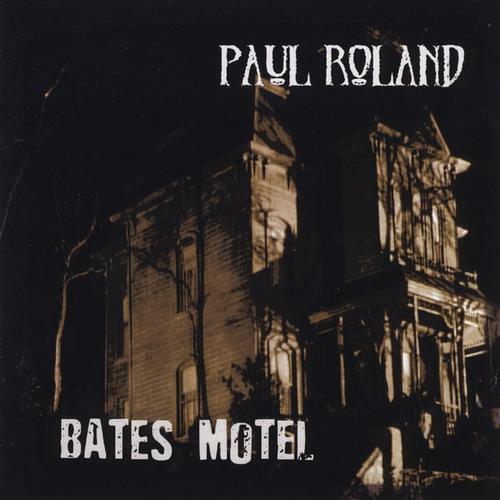 If you are unfamiliar with the work of British singer, song-writer, musician and author Paul Roland, please do me a favor before proceeding and
If you are unfamiliar with the work of British singer, song-writer, musician and author Paul Roland, please do me a favor before proceeding and  A native of Birmingham, Alabama, Andrew Douglas bought his first Moog synthesizer at age 20, having picked up his first musical instrument – a banjo – at the age of twelve. With a background in both rock and classical music, he formed the bass and keyboards trio Dreamwind (still nominally going after having lost their studio in 2009 due to the economic downturn), and at the ripe young age of 60 has released his first solo album. Peace Be Here has a rather poignant backstory: Andrew lost his 33 year old daughter to breast cancer in January 2011, and built a home recording studio later that year “to get out of my funk”. Indeed, the pure electronic music he has recorded for Peace Be With You breathes melancholy, loss, redemption and acceptance, its release giving others the opportunity to share this most personal of journeys.
A native of Birmingham, Alabama, Andrew Douglas bought his first Moog synthesizer at age 20, having picked up his first musical instrument – a banjo – at the age of twelve. With a background in both rock and classical music, he formed the bass and keyboards trio Dreamwind (still nominally going after having lost their studio in 2009 due to the economic downturn), and at the ripe young age of 60 has released his first solo album. Peace Be Here has a rather poignant backstory: Andrew lost his 33 year old daughter to breast cancer in January 2011, and built a home recording studio later that year “to get out of my funk”. Indeed, the pure electronic music he has recorded for Peace Be With You breathes melancholy, loss, redemption and acceptance, its release giving others the opportunity to share this most personal of journeys.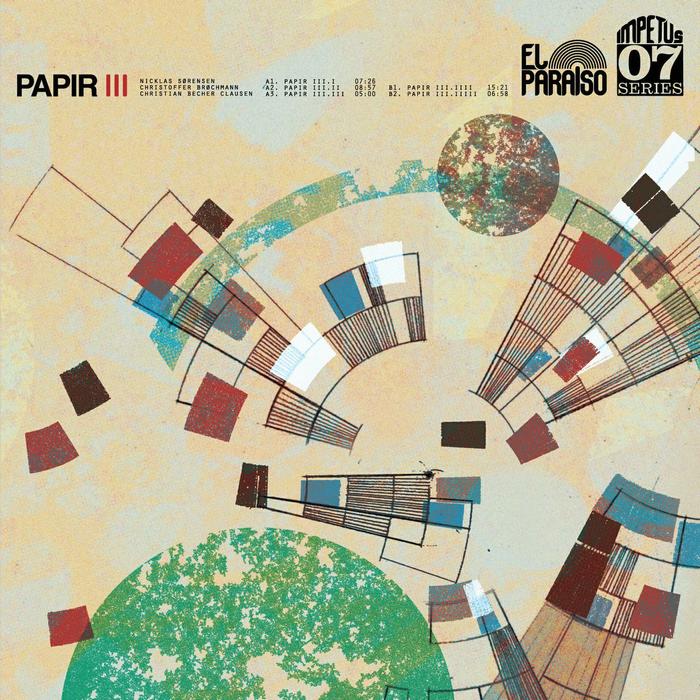 After 2011’s sprawling Stundum, Papir pulls things back a little for a less ambitious, but certainly more focused effort here on their third album, simply titled III. Continuing on with their often lengthy psychedelic jams, the band adds a bit of shine to things this time out. Bright melodies weave through intricate rhythms, like the warm, golden light of sunset sparkling on dark waves. Comparisons of course can be made to their fellow Danish musicians Causa Sui. But the music of Papir has a lighter, breezier vibe to it. Not that these guys can’t rock. Just check out the searing guitar work and frantic rhythms in both the opening and closing cuts on the album. But whereas Causa Sui allow a heavier, fusion style vibe to creep into their sound, Papir goes for a nimbler, jazzier feel. Their sound is very rich and diverse, drawing influences from post rock like Tortoise and jam rock like The Grateful Dead. But I think the real catalyst that holds this band together and gives them their unique vibe is drummer Christoffer Brøchmanns. In my opinion, he is one of the finest young drummers working in music today. His ability to draw on Krautrock, jazz, heavy rock and post rock experimental rhythms, weaving them together in a complex but seemingly effortless manner provides the unique backbone to Papir’s sound, allowing Nicklas Sørensens’ guitar and Christian Becher Clausen’s bass the freedom to joyously explore many realms of psychedelic sound, whether they are rocking out or, in the case of cut III, mellowing out. I think it’s that unforced and graceful feel to Brøchmanns’ drumming, careening along the symbols and over the snare, rather than relying on a heavy beat, that gives the music its breezier vibe, regardless of what the other two musicians are playing. If you listen to all three of their albums in order, you can hear just how far Papir has come in just a few short years. III is a definitive statement for the band. A great place to start, or a fine addition to the Papir albums you already have.
After 2011’s sprawling Stundum, Papir pulls things back a little for a less ambitious, but certainly more focused effort here on their third album, simply titled III. Continuing on with their often lengthy psychedelic jams, the band adds a bit of shine to things this time out. Bright melodies weave through intricate rhythms, like the warm, golden light of sunset sparkling on dark waves. Comparisons of course can be made to their fellow Danish musicians Causa Sui. But the music of Papir has a lighter, breezier vibe to it. Not that these guys can’t rock. Just check out the searing guitar work and frantic rhythms in both the opening and closing cuts on the album. But whereas Causa Sui allow a heavier, fusion style vibe to creep into their sound, Papir goes for a nimbler, jazzier feel. Their sound is very rich and diverse, drawing influences from post rock like Tortoise and jam rock like The Grateful Dead. But I think the real catalyst that holds this band together and gives them their unique vibe is drummer Christoffer Brøchmanns. In my opinion, he is one of the finest young drummers working in music today. His ability to draw on Krautrock, jazz, heavy rock and post rock experimental rhythms, weaving them together in a complex but seemingly effortless manner provides the unique backbone to Papir’s sound, allowing Nicklas Sørensens’ guitar and Christian Becher Clausen’s bass the freedom to joyously explore many realms of psychedelic sound, whether they are rocking out or, in the case of cut III, mellowing out. I think it’s that unforced and graceful feel to Brøchmanns’ drumming, careening along the symbols and over the snare, rather than relying on a heavy beat, that gives the music its breezier vibe, regardless of what the other two musicians are playing. If you listen to all three of their albums in order, you can hear just how far Papir has come in just a few short years. III is a definitive statement for the band. A great place to start, or a fine addition to the Papir albums you already have.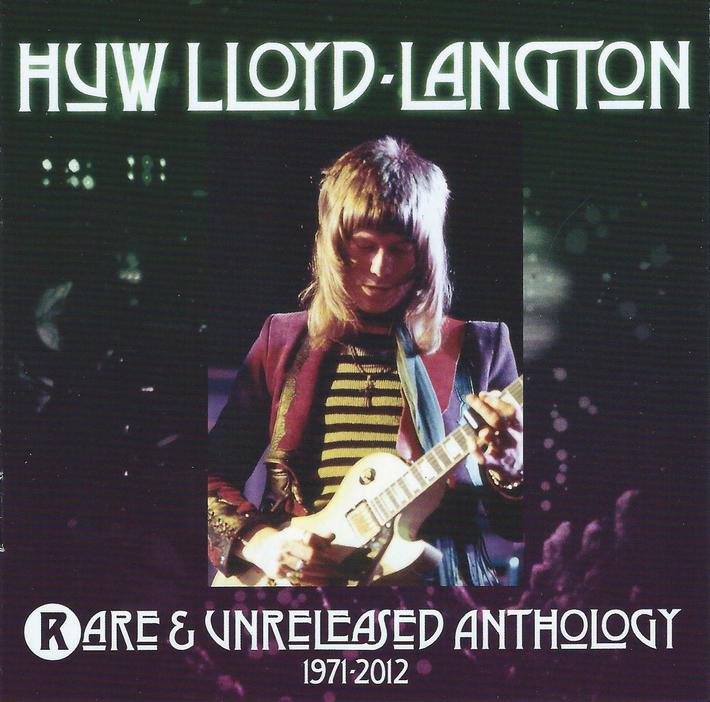 I did not know Huw personally, but from what I have heard from people who did know him, he was a great guy, a generous man, both to those he knew and to his fans. Sadly, he was taken from us late in 2012, but he has left a great legacy of music behind which includes this fine compilation.
I did not know Huw personally, but from what I have heard from people who did know him, he was a great guy, a generous man, both to those he knew and to his fans. Sadly, he was taken from us late in 2012, but he has left a great legacy of music behind which includes this fine compilation. Columbus, Ohio based Brujas del Sol are the quartet of Adrian Zambrano on guitar and vocals, Derrick White on bass, Jason Green on drums, and Ryan Stivers on keyboards. According to the Devouter Records web site, the band formed in 2011 as a guitar/bass/drums trio and recorded three volumes of Moonliner EPs which they made available on Bandcamp (they’re still there), but re-recorded them for this LP with the addition of Stivers’ keyboards.
Columbus, Ohio based Brujas del Sol are the quartet of Adrian Zambrano on guitar and vocals, Derrick White on bass, Jason Green on drums, and Ryan Stivers on keyboards. According to the Devouter Records web site, the band formed in 2011 as a guitar/bass/drums trio and recorded three volumes of Moonliner EPs which they made available on Bandcamp (they’re still there), but re-recorded them for this LP with the addition of Stivers’ keyboards.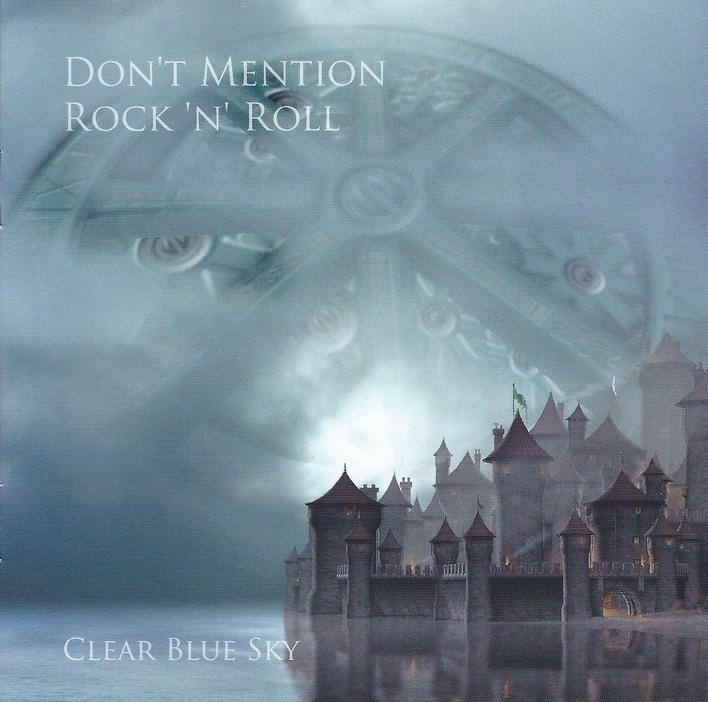 For those unfamiliar with the band, Clear Blue Sky released a couple albums on the Vertigo label in the early 70s, and have sporadically put out new albums ever since. Their last full set of new songs was Gateway To The Seventh Dimension, released in 2007, an album that drew on every aspect of what Clear Blue Sky can be about, from hard Blues rock, progressive rock, psychedelia and space rock; a really interesting convergence of genres.
For those unfamiliar with the band, Clear Blue Sky released a couple albums on the Vertigo label in the early 70s, and have sporadically put out new albums ever since. Their last full set of new songs was Gateway To The Seventh Dimension, released in 2007, an album that drew on every aspect of what Clear Blue Sky can be about, from hard Blues rock, progressive rock, psychedelia and space rock; a really interesting convergence of genres.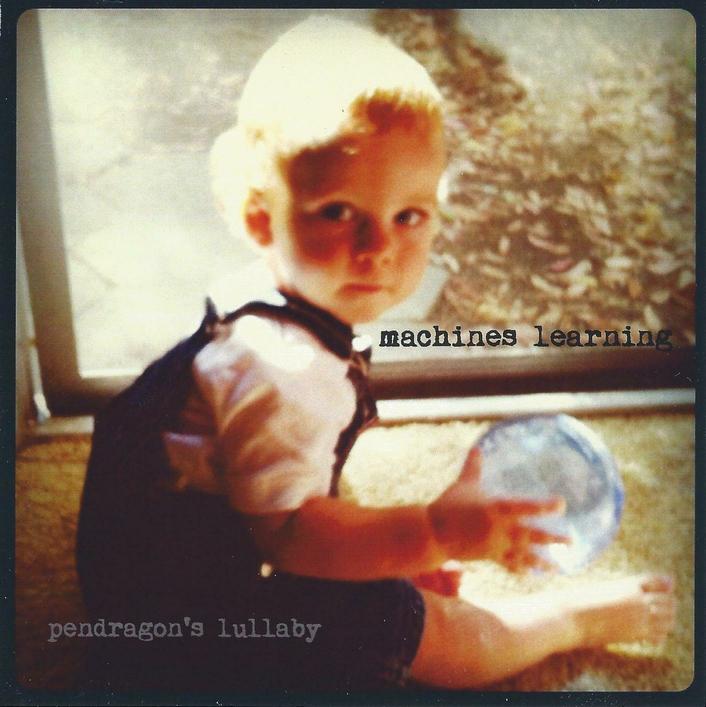 San Diego alt-rockers Machines Learning, comprised of guitarist/vocalist Paul Williams Balmer, bassist Bradley Botbyl and drummer Mario Quintero, have released a 26-minute EP’s worth of material recorded in a three month period at the start of 2012. Alternately noisy, droney and trippy, the album recalls some of the classic guitar-based rock that was coming from both sides of the Atlantic in the early ’90’s. For example, opening track Bulletproof Tiger practically screams My Bloody Valentine at you, with excellent droning and distorted waves of shoegaze guitar, over a militant 4/4 beat and across some elegantly wasted vocals. The briefest of pauses in the middle quickly gives way to a menacing wall of sound pushing the listener remorselessly into Punching The Rabbit. This opens with some very fuzzed out bass from Bradley Botbyl, bringing to mind Ash’s noisier moments, and some crytic lyrics; what the words mean is a definite second to how they sound. The somewhat more sparse Pendragon’s Lullaby recalls The Smashing Pumpkins’ Mellon Collie And The Infinite Sadness album that was playing at evey student party back in 1995. satAMcoffee opens with droning feedback and slower tempo, grinding you implacably down over its four minute length, while 010710 has a lighter touch with very melodic bass and melancholic lyrics to match. Closing track, This Destroyed Me, dispenses entirely with vocals, rocking on in woozy fashion for about five minutes with grinding guitars and an almost post-rock sound, that descends into a white noise coda. Fans of that era of classic “downer” rock should check out the raw guitar noises, droning feedback and powerful rhythmns contained within this excellent debut release.
San Diego alt-rockers Machines Learning, comprised of guitarist/vocalist Paul Williams Balmer, bassist Bradley Botbyl and drummer Mario Quintero, have released a 26-minute EP’s worth of material recorded in a three month period at the start of 2012. Alternately noisy, droney and trippy, the album recalls some of the classic guitar-based rock that was coming from both sides of the Atlantic in the early ’90’s. For example, opening track Bulletproof Tiger practically screams My Bloody Valentine at you, with excellent droning and distorted waves of shoegaze guitar, over a militant 4/4 beat and across some elegantly wasted vocals. The briefest of pauses in the middle quickly gives way to a menacing wall of sound pushing the listener remorselessly into Punching The Rabbit. This opens with some very fuzzed out bass from Bradley Botbyl, bringing to mind Ash’s noisier moments, and some crytic lyrics; what the words mean is a definite second to how they sound. The somewhat more sparse Pendragon’s Lullaby recalls The Smashing Pumpkins’ Mellon Collie And The Infinite Sadness album that was playing at evey student party back in 1995. satAMcoffee opens with droning feedback and slower tempo, grinding you implacably down over its four minute length, while 010710 has a lighter touch with very melodic bass and melancholic lyrics to match. Closing track, This Destroyed Me, dispenses entirely with vocals, rocking on in woozy fashion for about five minutes with grinding guitars and an almost post-rock sound, that descends into a white noise coda. Fans of that era of classic “downer” rock should check out the raw guitar noises, droning feedback and powerful rhythmns contained within this excellent debut release. The Big Note is the debut release from Michigan based Audionics (which means “the science of audible electricity”). The band are the quartet of Leo Gillis II on vocals, Sheldon Santamaria on saxophone, Djeto Juncaj on guitar and santoor (an Indian hammered dulcimer), and Kerry Gluckman on drums and percussion. I’ll get Aural Innovations readers attention by mentioning that Gluckman was in THTX, though The Audionics are far and away from the space rock that THTX played.
The Big Note is the debut release from Michigan based Audionics (which means “the science of audible electricity”). The band are the quartet of Leo Gillis II on vocals, Sheldon Santamaria on saxophone, Djeto Juncaj on guitar and santoor (an Indian hammered dulcimer), and Kerry Gluckman on drums and percussion. I’ll get Aural Innovations readers attention by mentioning that Gluckman was in THTX, though The Audionics are far and away from the space rock that THTX played.